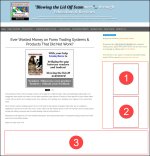- Home
- Girvan Lambert
- Tweeze Your Way to Binary Option Profits
Tweeze Your Way to Binary Option Profits
by Girvan Lambert
(Canada)
Working out a good binary options system is imperative if one ever intends to rake in some consistent profits. Without such a working system, the odds will be piled sky-high against the trader, so this isn't really something optional. Most trading systems aimed at binary options are based on chart patterns, and the strategy I'm about to discuss below is no exception. The Tweezer pattern is what's at the basis of this system, so obviously, before we go anywhere, we need to take a closer look at exactly what it is.
The Tweezer pattern is essentially a candlestick formation, made up of two candlesticks. Tweezer patterns can be tweezer tops or tweezer bottoms, depending on whether they occur at the top or at the bottom of a trend. You've guessed it: in both cases, the tweezer formation indicates the reversal of the ongoing trend, and that's exactly what we're going to use to trade the Call/Put contracts, and - with a bit of a modification - the Touch/No Touch contracts.
If you're emotionally too invested in your trading, get yourself a binary auto trader, and take stress out of the equation.
As said above, the tweezer pattern is formed by two candlesticks. If we take a tweezer top as an example, the day 1 candle (the first one in the formation), is a bullish one, featuring a short wick under its long body. The second candlestick is a bearish one, signaling the reversal of the trend. This candlestick has its opening price on the same level as the closing price of the previous candle, while its closing price is well below the opening price of the first candle.
In the case of a tweezer bottom, the Day 1 candlestick is a bearish one, while the day 2 one is bullish, signaling the trend-reversal.
Let's take a look at how the tweezer top is used for actual trading: because it heralds a bullish reversal, this pattern is suitable for the trading of the Put option. As soon as the tweezer top pattern has occurred, the Put trade can be placed, preferably at the top of the very next candlestick. The time-frame for this trade should be set according to the time-frame of the chart used for the analysis. A 4-hour chart for instance calls for an expiry time of 6-12 hours.
The placing of the Touch/No Touch trade is even more self-explanatory. Again, the tweezer pattern sets the critical point: above the starting prize of the Day 2 candlestick in the pattern, we have the No Touch zone. Pretty much everything below that line belongs to the Touch Zone.
The No Touch trade should ideally be placed some 30 pips above the top of the tweezer top, and the expiry should be set to some 6 hours if we're talking about the same 4 hour chart we used for the analysis above.
The touch trade is a slightly different matter: it goes about 40 pips below the top of the tweezer pattern, and its expiry is much more generous: it has to be set to about 12-48 hours.
Now then, according to some, due to the fact that definitive tweezer patterns are relatively difficult to locate, they don't provide a strong-enough trading signal in and of themselves. Support and resistance levels should therefore be used (obviously coinciding with the top/bottom of the tweezer patterns) to strengthen the message. The overbought/oversold stochastic indicator can also be used to this end.
The system should be first tested out on a demo account. One should only use it in real money trading once he/she has thoroughly mastered it.
Return to Girvan Lambert's Articles.





